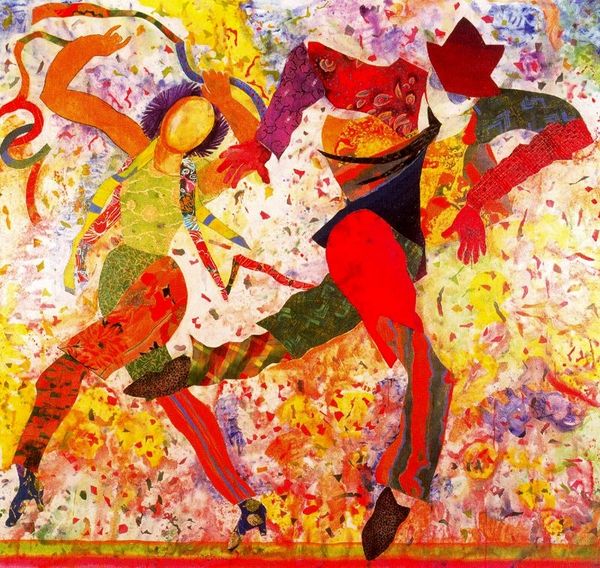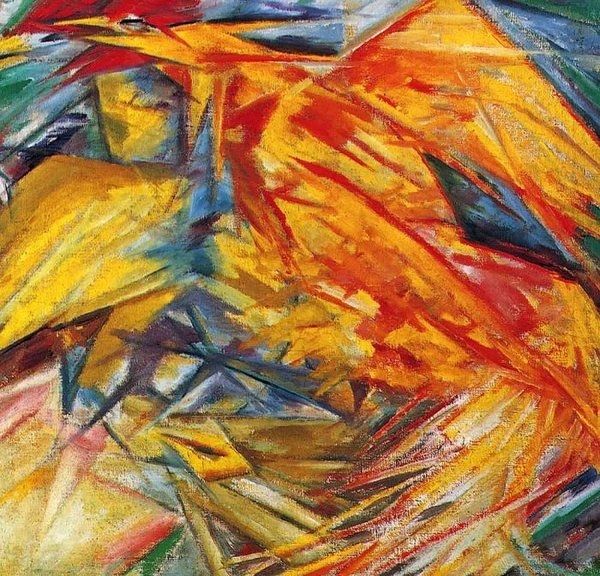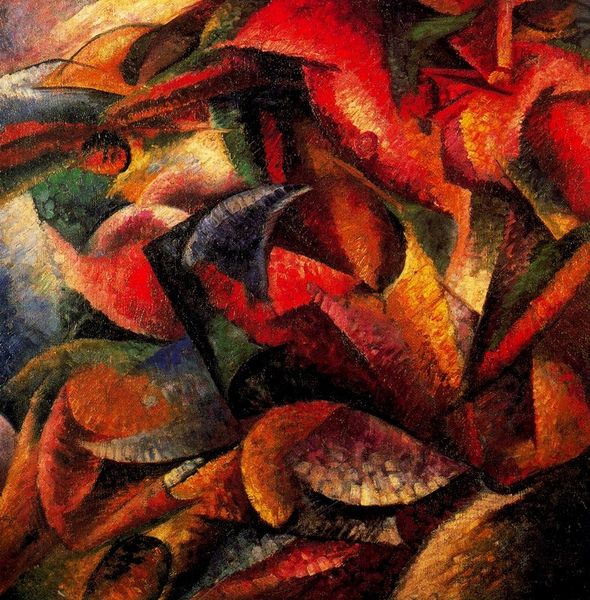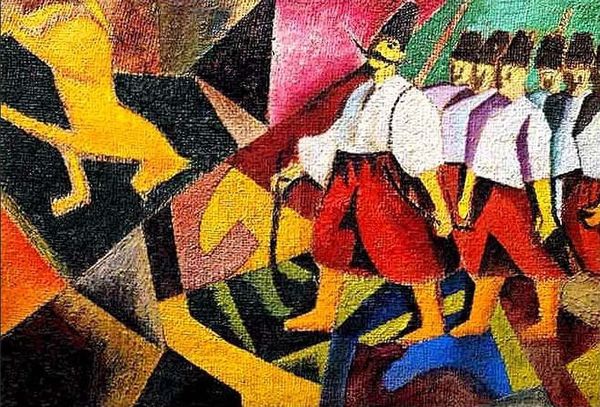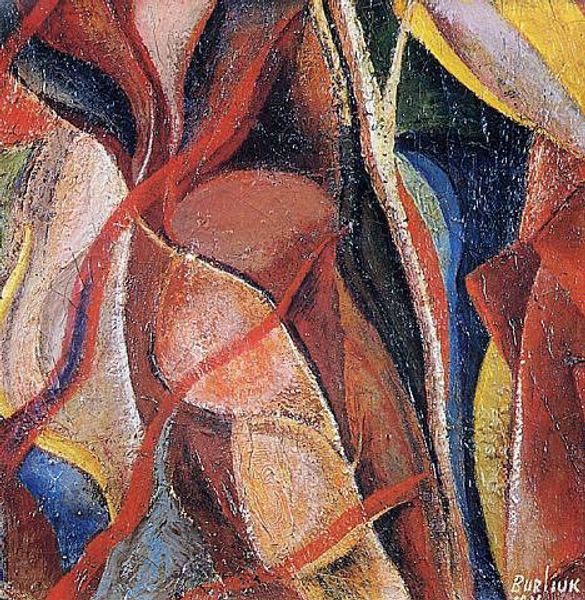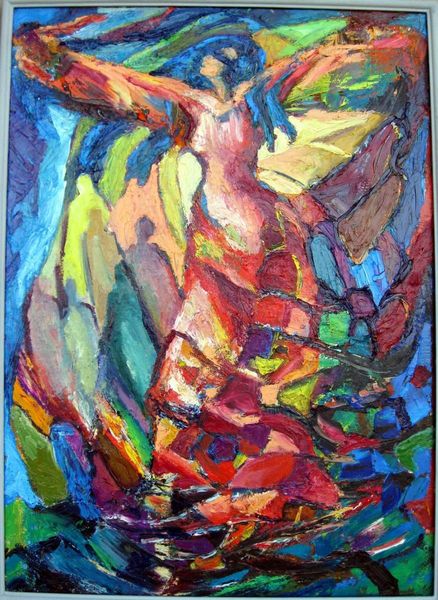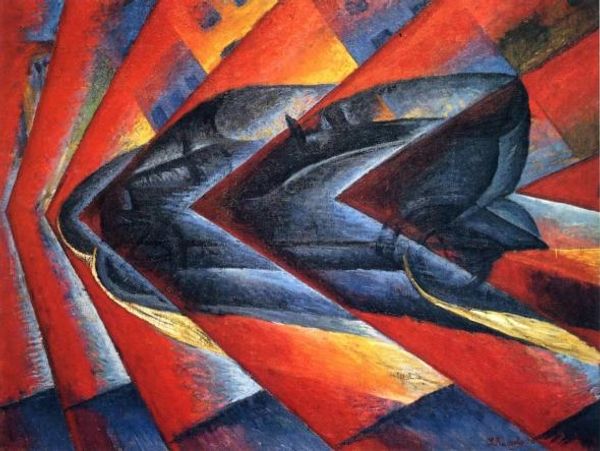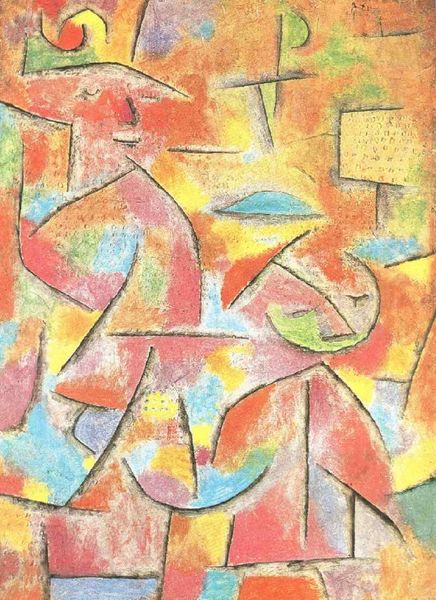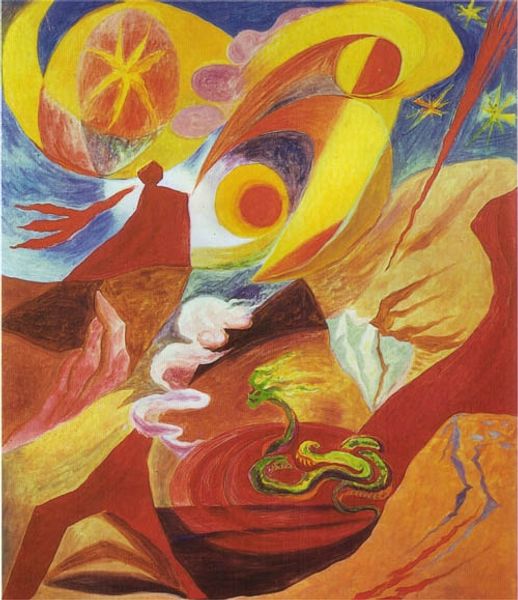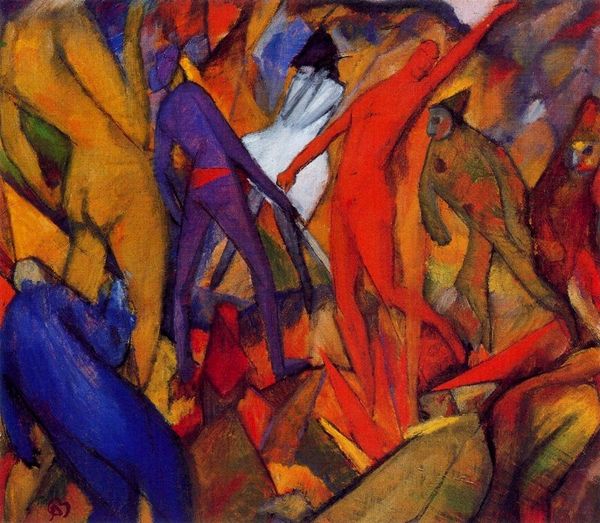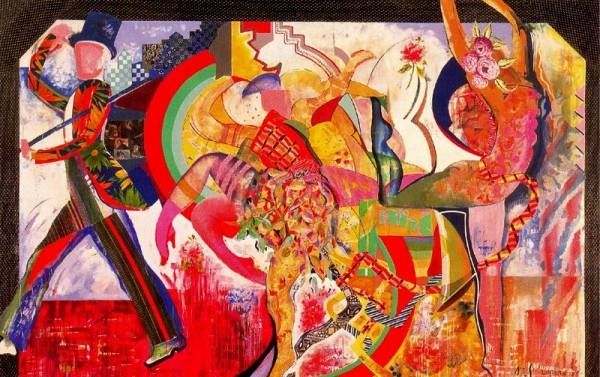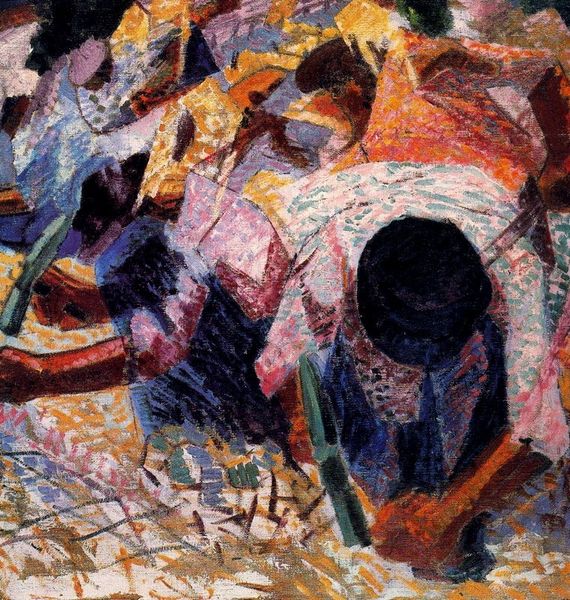
oil-paint
#
kinetic-art
#
oil-paint
#
figuration
#
oil painting
#
geometric
#
futurism
Dimensions: 40 x 40 cm
Copyright: Public domain
Editor: Here we have Boccioni's "Dimensional shapes of a horse", painted in 1913 using oil paint. It's… a jumble, really. My first impression is of abstracted motion, but what am I really looking at here? How do you interpret this work? Curator: From a materialist perspective, the oil paint itself is key. Its texture, the way Boccioni manipulates it – thick impasto, aggressive brushstrokes – reflects the Futurist obsession with speed and the dynamism of the machine age. Forget about capturing a static likeness of a horse; he's trying to render the experience of its movement, its energy. Editor: So the medium itself becomes the message? Curator: Exactly. The material isn't just a vehicle; it's an active participant in conveying the idea. Think about the availability of commercially produced oil paints at this time; industrial processes making art supplies readily available influenced what and how artists were painting. And the subject - the horse - traditionally a symbol of power and status, is now fragmented, mechanized. Do you think there’s also a comment about labour embedded here? Editor: Maybe, with the mechanization of labor that was rapidly changing society at the time? Replacing horses and even human workers? Curator: Precisely. Boccioni is showing us how the industrial revolution redefined not just production but also our very perception of the world around us. It goes far beyond simply representing something as traditional as a horse on canvas. Editor: It’s less about the horse then and more about how it’s been affected by – even consumed by – this new era of industrial advancement? That’s quite a statement embedded in oil paint and canvas! Curator: Yes, and thinking about it like that enriches the work!
Comments
No comments
Be the first to comment and join the conversation on the ultimate creative platform.
